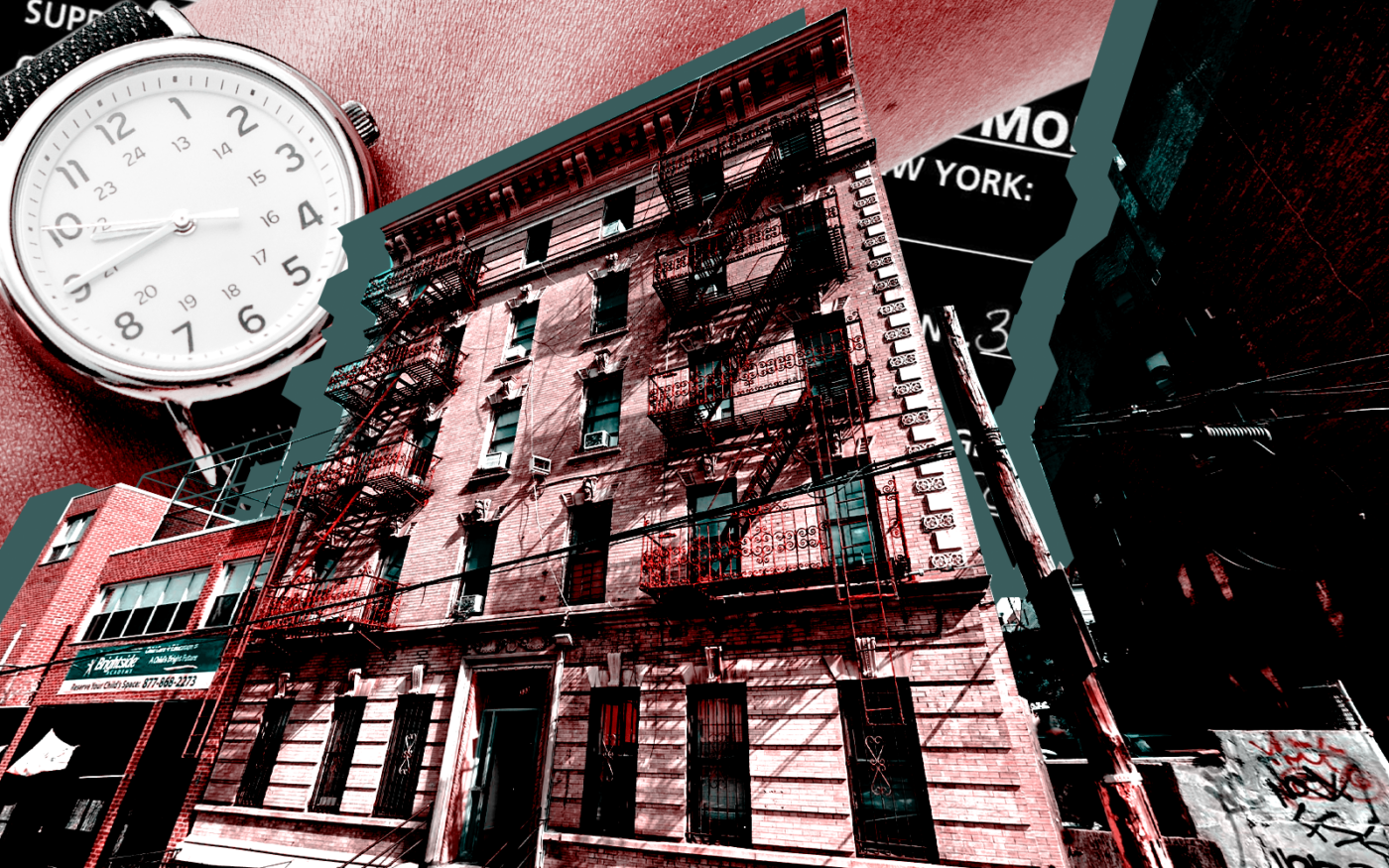Trending
Landlord claims bankruptcy to block foreclosure — 2 hours too late
Gregory Spooner misses deadline at dilapidated 333 East 150th Street

A photo illustration of 333 East 150th Street (Getty, Google Maps)
Gregory Spooner, the landlord of a violation-riddled Bronx apartment building, filed for Chapter 11 bankruptcy Monday — the same day his property at 333 East 150th Street was scheduled for foreclosure auction.
Property owners often put an ownership entity into bankruptcy to shield an asset from lenders. A Chapter 11 petition temporarily blocks creditors from going after any outstanding debts — a $5 million judgment, in Spooner’s case.
But court records show the landlord might have missed the boat by a couple of hours.
Spooner filed his Chapter 11 at 4:56 p.m. His foreclosure was scheduled for 2:40 p.m.
A document filed after the sale shows the building failed to fetch any bids and instead returned to a lender. That means when Spooner filed for bankruptcy through the single-purpose entity that owns the building, there was no asset to protect.
Real estate attorneys speculated about Spooner’s reasoning. “I have no idea why the LLC filed bankruptcy after the auction sale,” Richard Klass, who heads an eponymous law firm.
“I suppose he tried to file before the sale so he could stay that sale,” offered Jay Solomon, a partner at Belkin Burden Goldman. “There’s no reason to file just to protect the LLC for a deficiency claim.”
In the case of a recourse loan, lenders can go after a guarantor’s assets to cover whatever a sale of the property does not. But Spooner doesn’t appear to have guaranteed the debt; loan documents list Earl Bailey Jr. as the guarantor.
Neither could be reached for comment.
A new owner would be responsible for the mortgage, which could have a higher balance than the property is worth. Usually the lender wins UCC foreclosure auctions with a credit bid for the amount owed.
It’s not surprising that 333 East 150th Street fetched no bids. The property is 100 percent rent-stabilized, a red flag for many investors since the 2019 rent law effectively capped revenues in such buildings.
Properties with no market-rate units to offset stabilized rents have been some of the earliest to face foreclosure as a result of the law. Sugar Hill Capital Partners’ distress is one example.
But in Spooner’s case, his Bronx building was a tenant’s nightmare years before the state legislation passed.
Tenants in 2023 told NBC New York they had gone 10 years without cooking gas and were planning a rent strike. In 2019, the New York Post flagged the building as having open violations dating back to 2008 for a retaining wall that collapsed in 2004, blocking the building’s rear entrance for a time.
The property has 472 open violations and tenants have filed 289 complaints in the past two years alone, city housing records show.
Ricardo Oquendo, a receiver appointed to the property after its lender foreclosed in 2020, said he could not find a new property management firm to take over because conditions in the building were so “extreme,” according to NBC.
“Perhaps it was more of a headache than it was worth,” Solomon said of the building’s failure to sell at auction.




